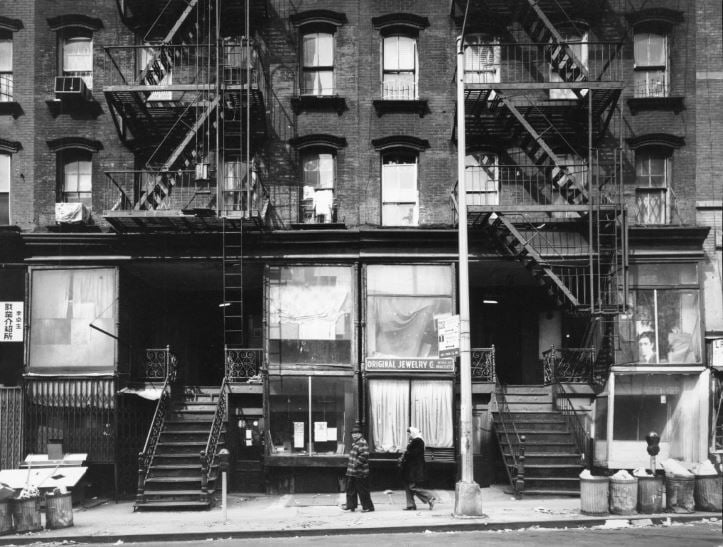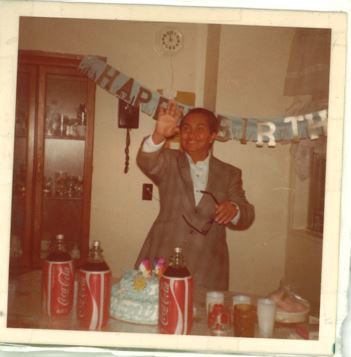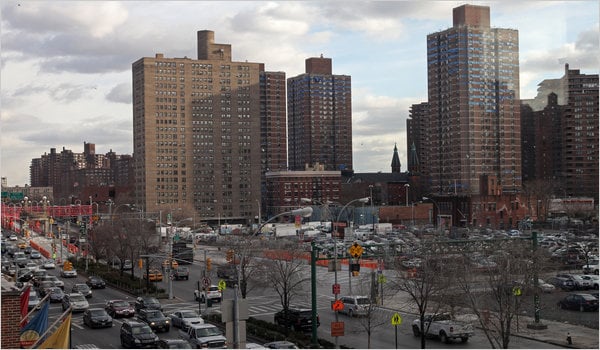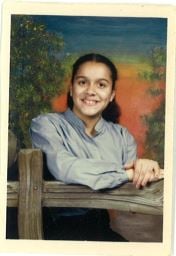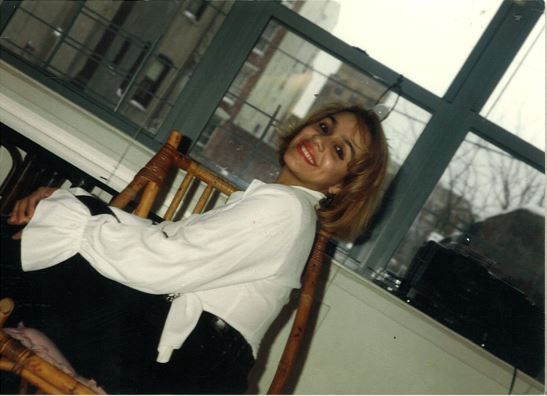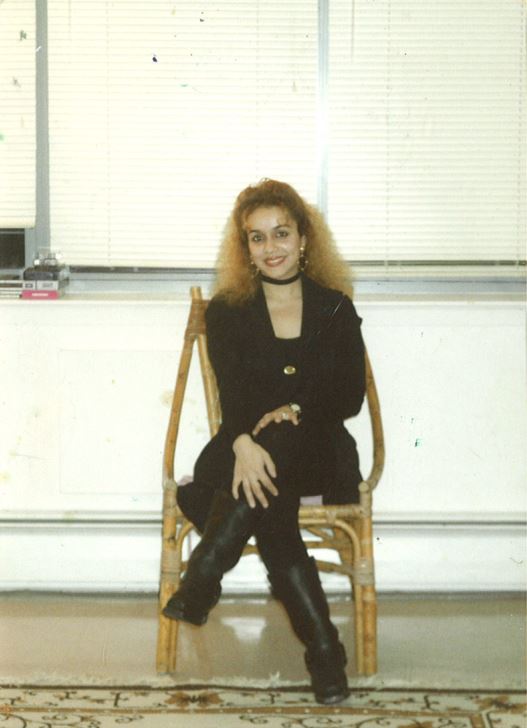Blog Archive
Staffers and Neighbors Part Two: Frances Pena
Staffers and Neighbors is a three part series about three Tenement Museum employees who have grown up in the Lower East Side. They each represent the stories that the Museum tells with our existing tours, and the stories that the Museum looks forward to telling in the future. Today we’re talking with Frances Pena , the Human Resources and Payroll Manager at the Tenement Museum, about her life on the Lower East Side.
Where are your parents from?
My parents are from the Dominican Republic. I know that my dad came first in the mid-1960’s. My Mom came about a year later, and she had me right away. I’m one of 11 kids – I have seven siblings that were born in the Dominican Republic and four here. My siblings who were born in Dominican Republic came after my mother.
Where did you live when you were growing up?
We used to live on Forsythe between Rivington and Stanton in an old tenement building. Then we moved to the Seward Park Housing Projects. We were there in the 1970’s; 1973, 1974. I was there as a teenager and a young adult, until I was 17 years old. I think my dad told us that we lived somewhere else first, but I don’t remember that. But it was always the Lower East Side.
What was it about the LES that attracted your parents to the neighborhood?
I think they moved down here because they already had family here.
What’s one of your favorite memories of growing up on the LES?
When we lived on Forsythe Street, there were a lot of family members in that building. In Roosevelt Park on Saturdays, we would always play softball. I would see my brothers and my cousins, and we would watch them play softball. It was just a lot of gathering, and we would play, we would have so much fun. I always felt that it was such a community there, because we all knew each other. In the building almost everybody was family or they knew my parents from back home [in the Dominican Republic]. I remember there were always a lot of people around, always a lot of people in my house. We felt so comfortable there because we all felt like we were a like a family. When we moved to [Seward Park], it was different. We were the first Dominican family to live there. There were some Italians, some African Americans, and a lot of Puerto Ricans. But after I grew up there, and I started making friends, I felt more like a part of that community. Most of us went to the same school.
What were the best and worst parts of being from the LES?
The best thing that I love about the LES is everything is close by and the diversity that we have here. If you want to have Indian food you go to 2nd Ave, if you want to have Italian food you go down to Grand Street, if you want Chinese food you go down that way. It’s the diversity that we have now; growing up, we didn’t have that. I see the diversity today, and I like it, but at the same time, I don’t like it, because there have been a lot of changes.
The biggest issue is the rents here. I remember when I was growing up; an apartment was 250 dollars, now its two thousand dollars. People can’t afford that, and if you can it’s because you have 3 or 4 people living in that apartment. In a way, a lot of the change has been good, but a lot of the change we worry about, because, for example, the bodegas are not there anymore, like they used to be. For my mother, Essex Street [Market] is the best place for her to go [to get groceries], so what happens if they take it away? Where is she going to go? And it’s not the landlords fault either, because they have to pay their taxes, and everything has gone up.
But in a way, it’s a good change because you can try these different cultures. Because I can go into any restaurant and know that it won’t be a problem.
Your mother still lives here?
She still lives in Seward Park.
Do you still live in the neighborhood?
I do! On 2nd Street.
Have you lived in other parts of the city? How do they compare?
Yes, I lived in [Long Island City] Queens for five years. We got a bigger apartment, because my kids outgrew the apartment we had. We lived in a New York City Housing Project there. It was different. Everything was far away, and you needed a car. Just getting to the supermarket was really hard. The best thing about it was that I was working here, so I came down here all the time. But every time I came back to Queens, I felt like I was on a different planet.
We moved back in 2009. We have a small apartment, but it’s a perfect size for us.
You don’t have 11 kids in it?
No, but we would have done it if we had to! When I was growing up, on Forsythe Street, I remember… I was young so a lot of it, I don’t remember, but I remember we had the bathroom in the hallway. We were on the first floor, and the bathroom was outside, the tub was in the kitchen. I remember two bedrooms. My brothers slept in the living room. It was not easy; it was crowded, but it was fine.
What attracted you to the Tenement Museum?
I’ve been working here since 2002. Once I was hired and I went on a tour, I went on the Sweatshop Workers tour, then called Piecing It Together. I felt really drawn to it and felt that connection so fast, because growing up, my parents always worked in a factory, and I would go help them in the factory. And my mom always used to sew in the house. I remember on the tour, my eyes got so watery and I thought “I can’t believe this! They’re talking about my family!” Even though they were Polish, I felt the connection there. I didn’t care that they were from another country or another culture, I felt the connection. I felt that they were talking about my family.
I love the mission here, I think it’s amazing. I’ve been so blessed to be here and to grow here. And I’m also very blessed that my family has been a part of this museum, from the walking tour and different things, they talk about my family. I feel very connected to this museum. For us, for me, I never forget where I’m from. Even though I was born and raised here, my connections are in Dominican Republic; my blood, everything is from there. I was raised in the culture of the Dominican Republic. I still have that connection; the music, the Hispanic channels, everything. That’s why I’m really connected to the museum.
Let’s say I have one hour in the LES, and I’ve already taken my Tenement Museum tour (obviously). What should I do?
Go to Essex Street Market. Go because of the different kinds of foods, the diversity. Don’t leave. Just go in there, even if it’s for 20 minutes! That’s the culture of the Lower East Side.
Thanks Frances!
– Posted by Lib Tietjen
